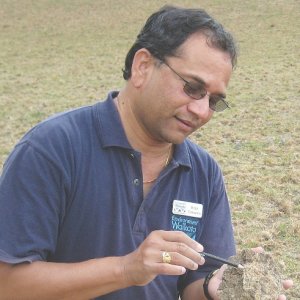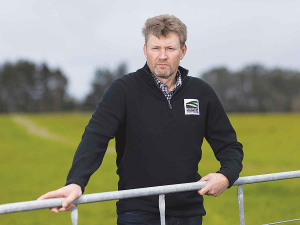Getting it wrong means the benefits of fertiliser are wasted; it can end up contaminating groundwater and promote algal growth in nearby waterways.
As there are a range of risks when applying fertiliser, and strategies to help you avoid them, I recommend all farmers have a nutrient budget and a nutrient management plan for their properties and discuss their situation with their fertiliser rep. It’s also a requirement of our regional plan to have such a budget and plan if N use exceeds 60kg/ha/year.
Reps or consultants can help with nutrient budgets for those who don’t have them, while AgResearch last month released the new Overseer nutrient budget model version 6, which can be downloaded from http://www.overseer.org.nz.
One factor to bear in mind when doing nutrient budgets in Waikato is that recent soil quality monitoring results reveal that high fertility and compaction continue to remain problems on dairy and some drystock sites.
Another issue to consider is nitrate leaching. Plants need nitrogen (N) for healthy leaf growth. But N is an extremely mobile nutrient. If more nitrogenous fertiliser is applied than plants can take up most of the unused nitrogen ends up leaching down through the soil into groundwater. Sometimes N will also be lost to waterways as runoff and some is always released back into the air as gas.
An important reason for inefficient N cycling in grazed pastures is the deposition of N by grazing animals in concentrated urine patches. The amount of N deposited is generally much greater than can be taken up by the plants in the area of the urine patch, and the excess N can be lost through leaching. These losses are likely to be highest during periods of high drainage with excess rainfall and low soil temperatures that limit pasture growth and N uptake: autumn, winter and early spring. Dung patches may also contribute to a lesser degree; dung consists mainly of organically bound N that is released slowly.
The amount of N leaching from pastures can be reduced by:
Timing fertiliser application to avoid periods when plant uptake of N will be low, such as when soils are saturated, during heavy rain, colder periods and times of low soil temperatures.
Applying N fertiliser in split dressings (as many split doses as possible), rather than all at once.
Irrigating farm dairy effluent to a large enough area. Adjusting fertiliser policy for effluent irrigated areas to account for the nutrient value of effluent. Using fenced wetlands and well-managed open drains as nutrient traps.
The nutrient phosphorus behaves differently from N because it binds with the soil and only dissolves slowly in water over time. This means it doesn’t readily leach to groundwater. But it can still damage the health of waterways through soil erosion and surface run-off into water.
Farmers can reduce the amount of phosphorus run-off by not applying phosphate fertiliser when heavy rain is coming. Other tips include:
Following the NZ Fertiliser Manufacturers’ Research Association Code of Practice for Nutrient Management.
Applying fertiliser when the grass is in an active growing phase.
Not applying fertiliser near waterways.
Leaving a grassed buffer strip between paddock and waterway – the strip filters the phosphorus before the run-off reaches the water.
Controlling run-off from tracks, races, feed and stand-off pads.
Meanwhile, if soil Olsen P levels are high, it’s likely more phosphate fertiliser has been applied than needed for optimum pasture growth. It also means there is a greater chance of losing a lot of added phosphorus to nearby waterways.
Soil tests combined with an Overseer nutrient budget can help ensure soil fertility isn’t excessive and reduce the amount of nutrients lost from the farm.
Be aware that fertiliser can be poisonous if ingested by stock. Make sure animals don’t have direct access to fertiliser bins or other storage facilities and don’t graze pastures where fertiliser particles can be seen. It’s best to wait until sufficient rain has washed the particles into the soil.
In conclusion, I’d stress that large nutrient surpluses should be avoided for two important reasons. Firstly, the surplus can in most cases be lost to the environment (N particularly), causing off-site problems, and secondly, nutrient surplus is a waste of money.
Conversely, a nutrient deficit can indicate soil nutrient reserves are being depleted, a situation that cannot continue and will eventually compromise pasture production.
So the nutrient budgets I referred to earlier help measure inputs and outputs and are an invaluable tool for helping avoid financial and environmental headaches.
• Bala Tikkisetty is a sustainable agriculture coordinator at Waikato Regional Council. For further advice contact him on 0800 800 401 or This email address is being protected from spambots. You need JavaScript enabled to view it.
















